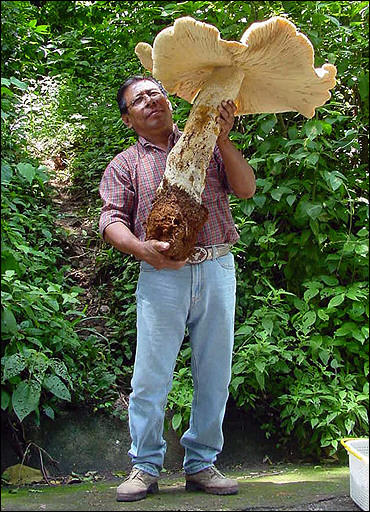
Enjoy your summer and I hope all the mushrooms you find will be BIG!
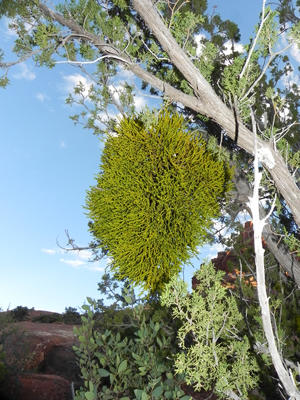
A leafy mistletoe (Phoradendron juniperinun) on juniper in Arizona. This mistletoe living in desert conditions has only green stems and no leaves.
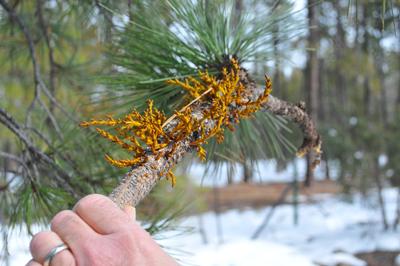
Dwarf mistletoe in the western United States (this one is on ponderosa pine - Arceuthobium vaginatum) can be large in comparison to the small shoots of dwarf mistletoe on spruce here in Minnesota.
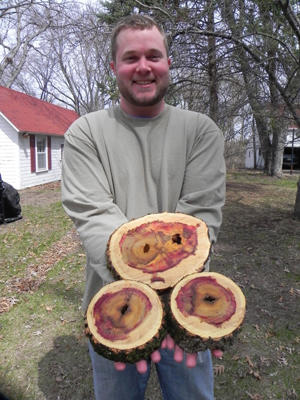
Red stain in box elder. This stain is a defense reaction of the tree to invading fungi.
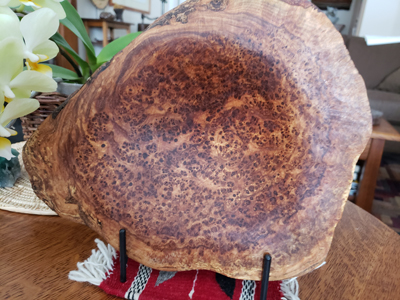
Galls and burls on trees can have very dense wood and interesting patterns as you can see in this shallow bowl on display in my living room.
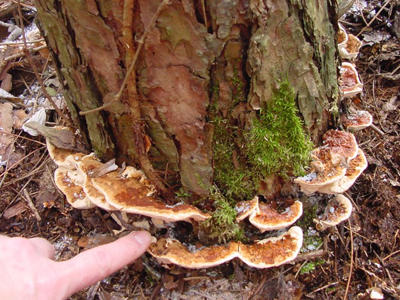
Heterobasidion irregulare fruiting bodies at base of a red pine. This pathogen has recently been found in southeastern Minnesota and is expected to spread. The Wisconsin DNR reports 28 counties in Wisconsin with Heterobasidion Root Disease. Be on the look out for this pathogen in Minnesota.
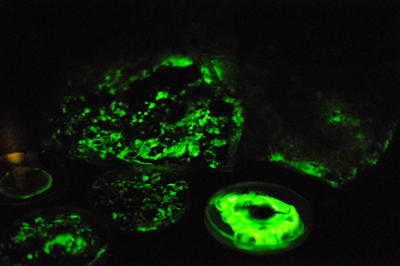
A few fungi, such as Armillaria, are bioluminescent and have mycelium that glows in the dark. In this photo you can see some glowing mycelium in petri dishes and also in a bag of sawdust inoculated with Armillaria. This photo was taken in the lab with an exposure of about 3 minutes.
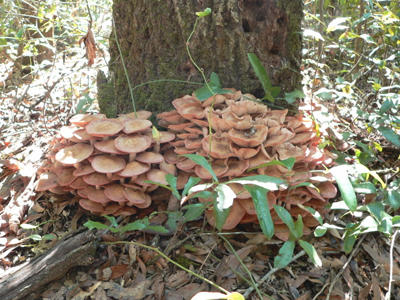
Armillaria fruiting at the base of a tree. Fruiting bodies in Minnesota usually appear in September
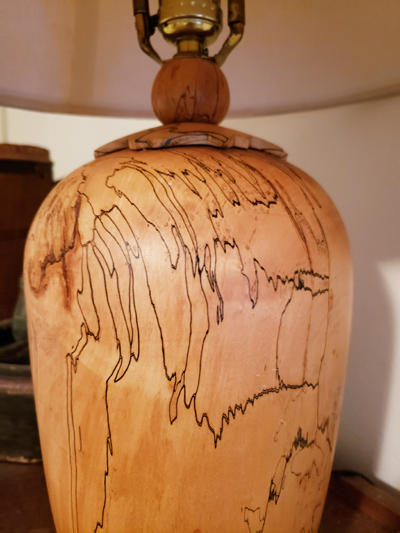
Zone lines or pseudosclerotial plates form between incompatible fungi growing in wood and can make beautiful patterns. Wood with zone lines is used by artists to make interesting and unusual items like this lamp.
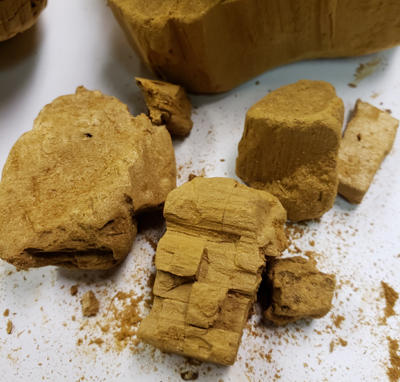
Brown rot fungi cause large losses of wood strength properties early in the decay process.
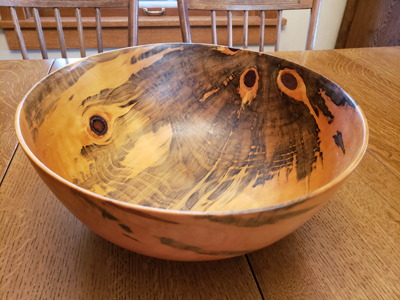
Blue stained wood was used to make this magnificent bowl
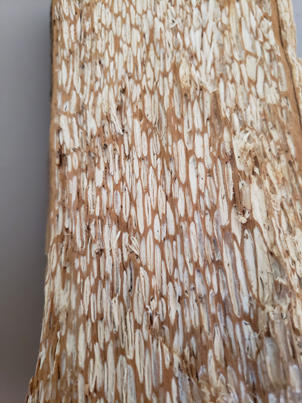
A white pocket rot. This is a type of white rot where the fungus selectively degrades lignin leaving cellulose (white pockets) behind.
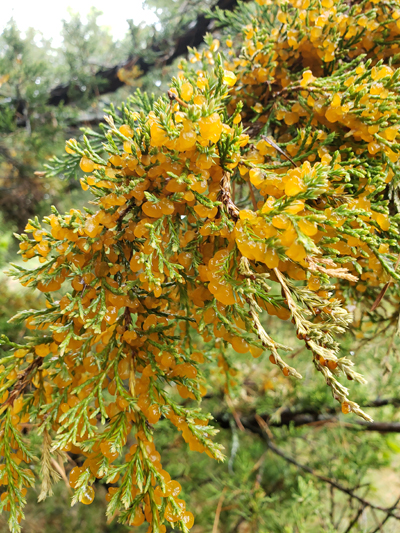
Juniper broom rust with telia coming directly out of the stems on the broom.
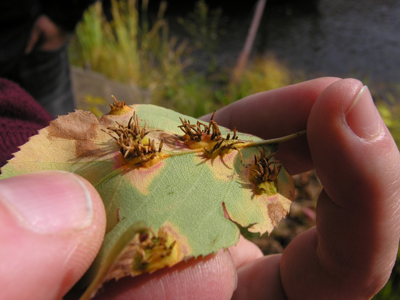
Aecia of Hawthorn-Juniper rust on the bottom of a hawthorn leaf. These aecial "horns" are packed with aeciospores.
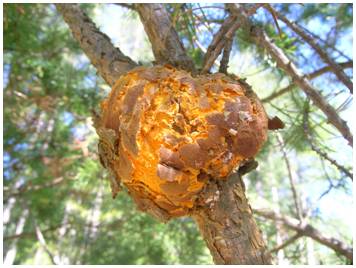
For pine oak gall rust, the year following pycnia production, aecia are formed. The entire gall produces massive amounts of aeciospores in the spring. The aeciospores infect developing red oak leaves.
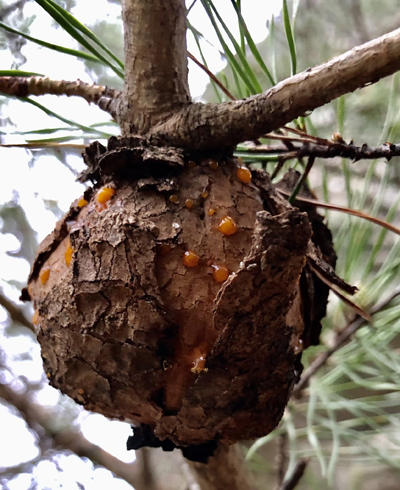
Pycnia forming on a gall of pine-oak gall rust. The pycnia is a sweet fluid that attracts insects. The fluid contains pycniospores (spermatia) that act to fertilize the opposite mating types. People brave enough to taste the pycnial fluid find it exceedingly sweet and has somewhat of a wintergreen taste.
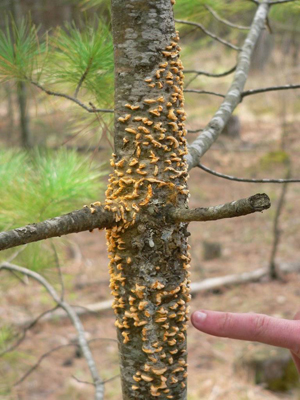
Aecia of white pine blister rust is found on infected white pines in late may to early June in Minnesota. These spores infect currents and gooseberries.
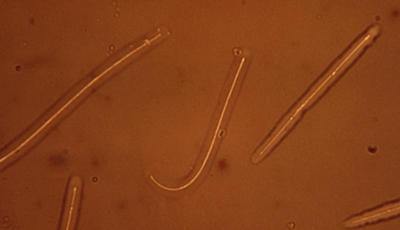
The ascospores of Lophodermium as seen under the microscope. The spores are long and tread-like with a sticky sheath that helps adhere them to needles after they are ejected out of the hysterothecium.
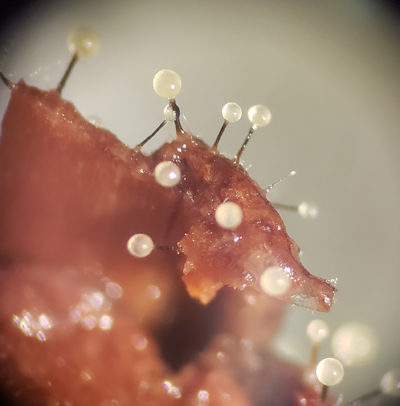
Synnemata are produced by the fungus causing Dutch elm disease on dead elms. Sticky spores are produced on the top of the packed columns of conidiophores (black stalks) and elm bark beetles pick up the spores and bring them to new elms when they maturation feed on elm twigs and stems.
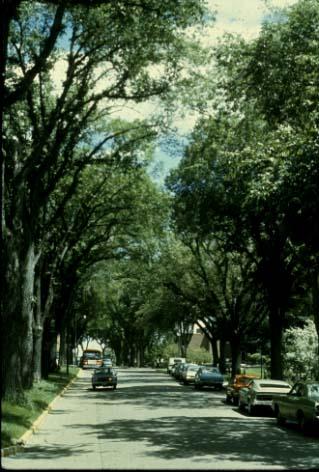
The University of Minnesota St Paul Campus before Dutch elm disease started to take its toll. Big elms lines all the campus streets. This picture shows where the buses stop outside of the student center.
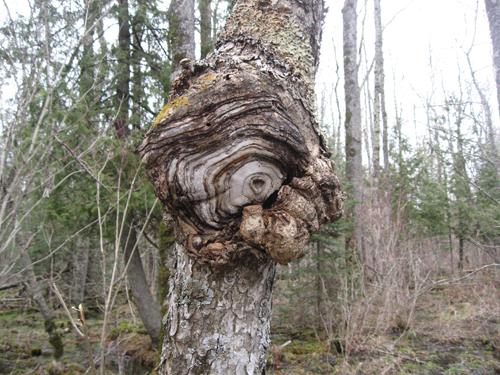
What fungus do you think caused this canker on ash?
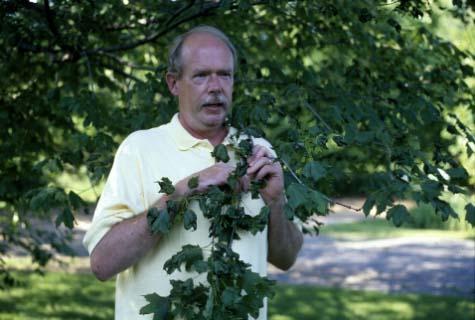
This homeowner asks "Will my maple tree die?" NO! - not if the tree just has maple anthracnose
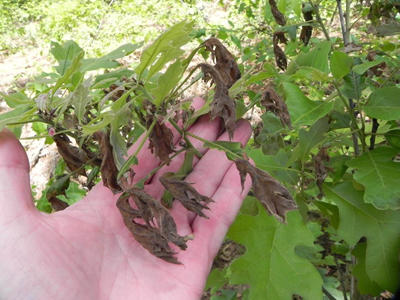
Spring infection of oak with oak anthracnose when leaves are just forming can mimic the symptoms of oak wilt. However, there are ways to differentiate oak wilt from oak anthracnose. Can you determine this?
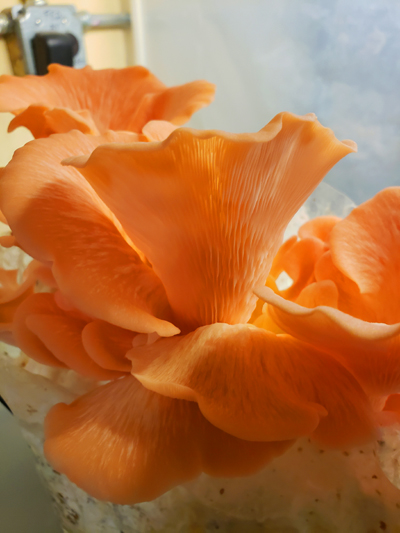
A fruiting body of Pleurotus (the pink species). This is an example of a fungus in the Basidiomycota. The gills contain basidia and basidiospores.
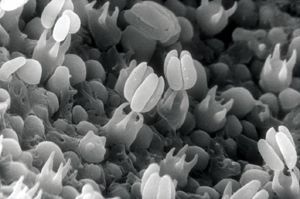
Sectioning a gill shows basidia with 4 basidiospores on each basidium.
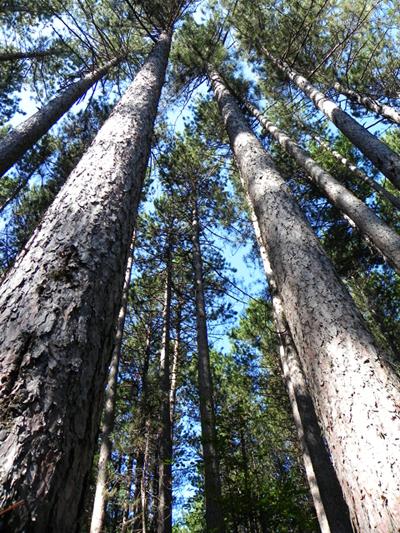
Keeping forest and urban landscape trees healthy requires a good knowledge of tree diseases. This class will provide you with important information you can use in the future. Watch this page for new photos each week.